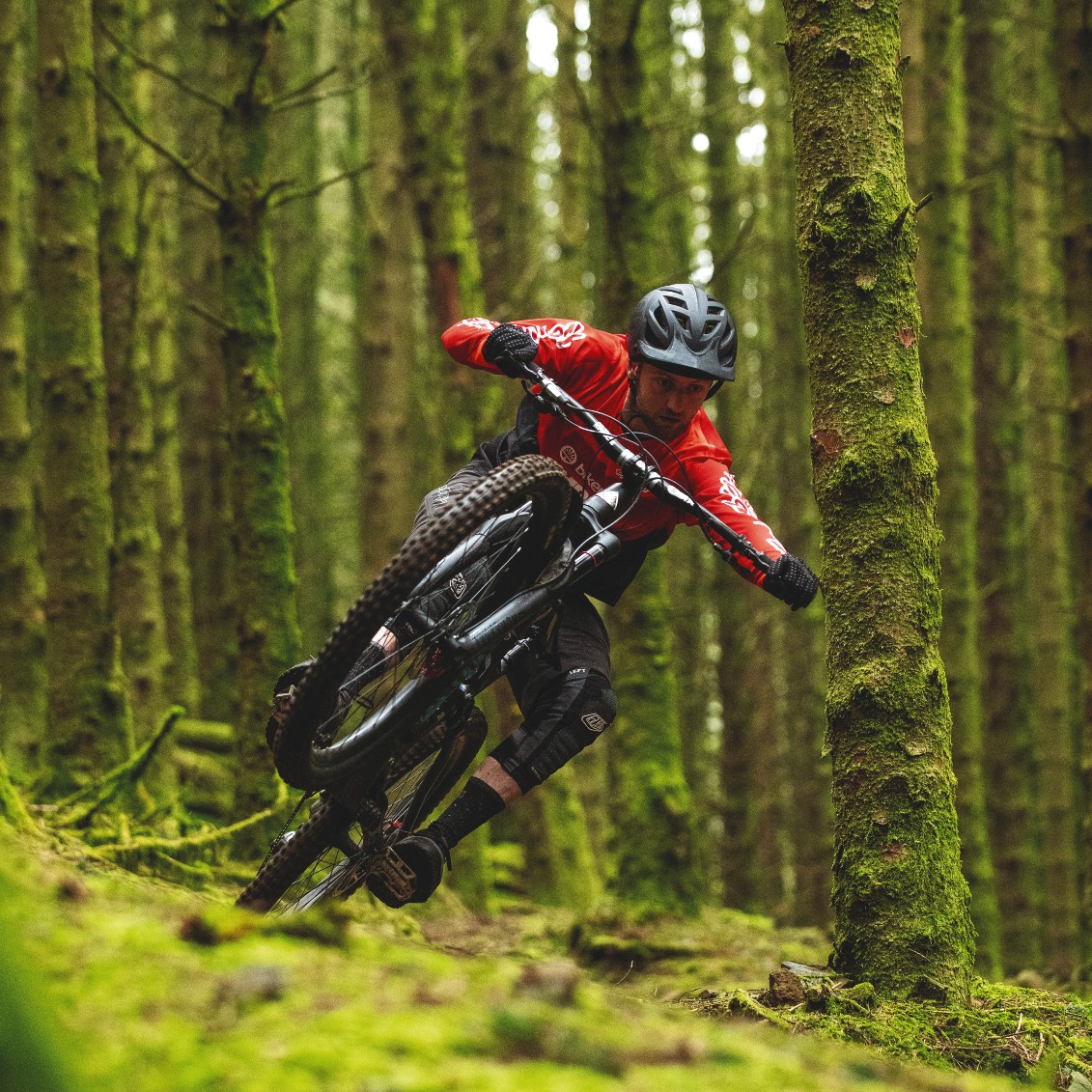'Aerospace technology' is a term that’s bandied around a lot when it comes to bike design, but it’s no more true than for Robot Bike Co, a company where two of the four original founders still have full-time jobs in the industry. These four gravitated together through a shared passion for bikes and a desire to build one themselves, but even before they started the company, they knew they didn’t want to go down the traditional route.
Every Robot bike is a one-off. It's built from a set of titanium lugs, into which carbon tubes are bonded. The lugs are constructed using 3D printing – or Additive Manufacturing (AM), as it’s correctly called. By altering the angle of these pieces and changing the lengths of the tubing, Robot can tailor make a frame to a rider’s exact specifications. We were eager to find out a bit more about the guys behind the company, so we headed over to Monmouth in South Wales to meet the Robots.
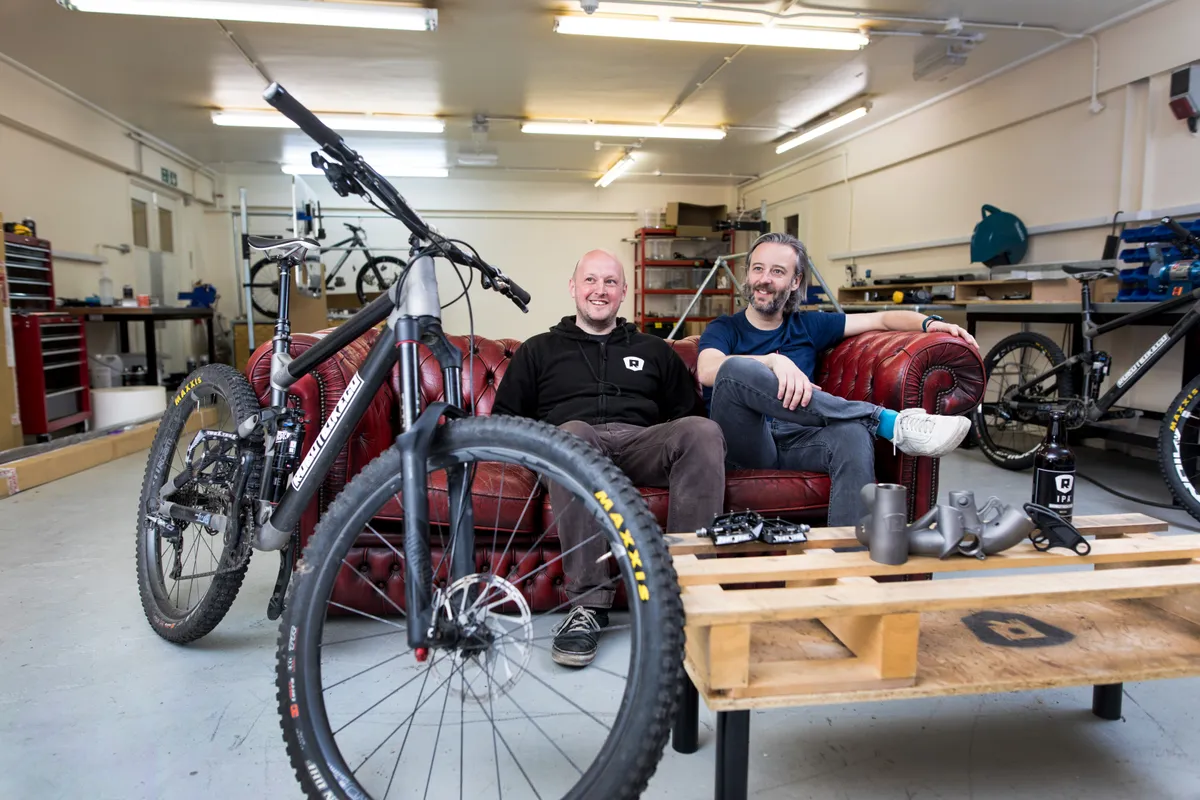
MBUK: What prompted you guys to start Robot Bike Co?
Ed Haythornthwaite: A lifelong obsession with bikes really! I’ve always been fascinated by bike design and I chose to do Material Science and Engineering at Bath Uni because it was the most relevant subject to making bikes that I could find. That was where I met the other guys. We formed a mountain bike club, started riding together and going on holidays to places like Les Gets, where we’d be forever scribbling down different designs for frames. We knew we wanted to build a bike together and we knew we wanted it to be something special, but then life got in the way and we all went down our separate career paths. I managed a few bike shops and worked for a steel frame builder making all sorts of bikes. After that I worked as a mechanic for the Athertons for a bit and then got a job at Dirt magazine, where I was Technical Editor for 10 years. Over that time, I rode a ton of bikes and figured out what worked, what didn’t and what I thought the market needed. My friend Ben [Farmer], who'd been working with additive manufacturing and composites, approached me with a concept for a bike. That was about four years ago, and his idea was the starting point for what we’re doing now. Working at Airbus, Ben had met a guy called Andy who knew everything about AM, so we got him involved too.
Andy Hawkins: I started off studying Industrial Design and from there ended up getting a job at Renault, where I worked for five years developing and testing stuff for race cars. I moved to Airbus after that and spent eight years there, working in corporate research, where I learnt a lot about AM and carbon.
Ed: The four of us started designing and I got in touch with Dave Weagle (the suspension designer responsible for the DW-Link and Evil’s DELTA system) to see if he’d be up for working with us. From there, it’s just been a lot of hard work to get to where we are today! We briefly considered going down the Taiwanese manufacturing route, but quickly discounted that. It’s scary to see how shoddily some of the carbon bikes over there are made.
How have things changed, in terms of design and construction?
Andy: I did all the original CAD work on the prototype frames. Dave Weagle did the suspension kinematics and we designed around his pivot points and made a 3D model. From there, the first four bikes were modelled by hand, but that’s all now integrated into a parametric computer model. We worked with a company called Hieta, who took our design and automated it in a tool called Solidworks. The result is a user interface where you input your height, etc, and the software converts it into a geometry table, which reconfigures the CAD model and outputs the dimensions for manufacturing the frame’s individual parts.
Ed: Our long-term vision is that customers can input their numbers on our website and it goes straight to the machine. We’ve come up with an algorithm for what we reckon is the best geometry for the bike. Obviously, people can tweak it from that, but most keep it pretty constant. It’s important to give people a starting point – it would scare a lot of them off if we presented them with a blank sheet of paper! Within our parameters, though, we reckon we can give the vast majority of riders what they want.
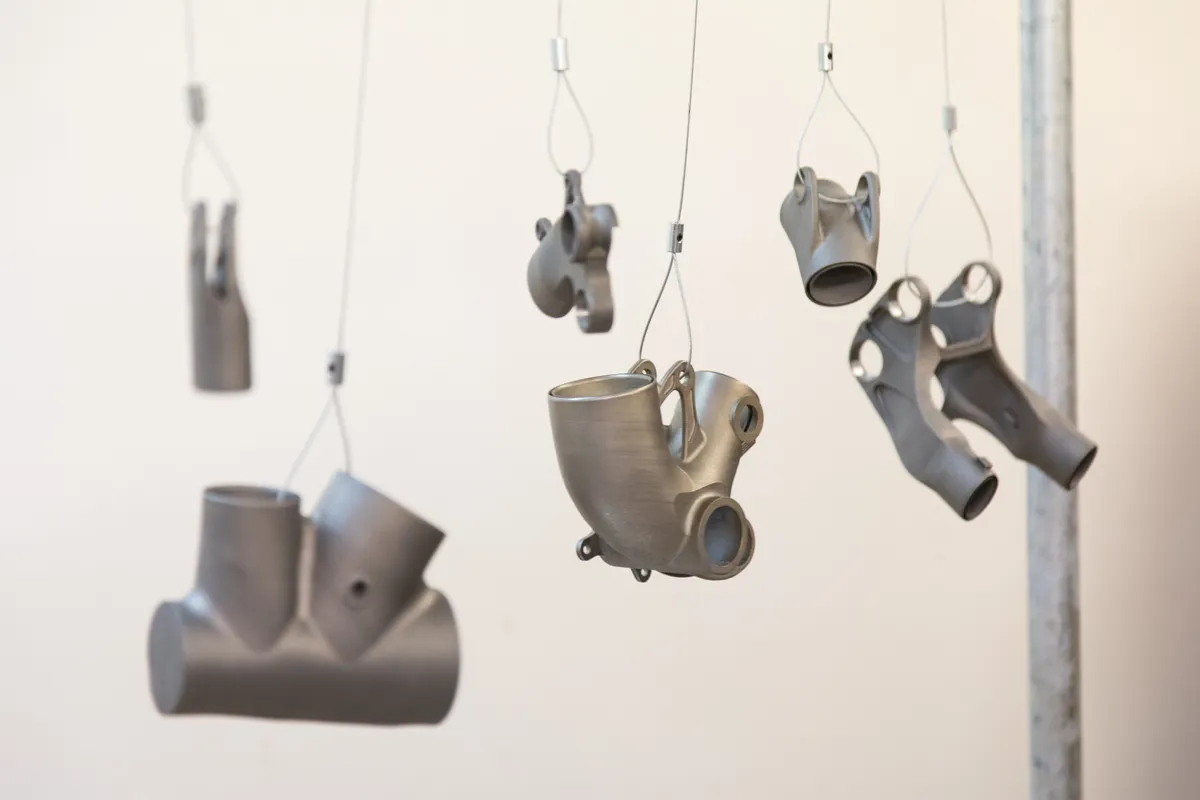
What would you say the geometry of your bikes is like compared to the norm?
Ed: It definitely errs towards longer and slacker, but is certainly nowhere near that of the Mojo/Nicolai GeoMetron. I’ve ridden one of them and they're fast, but for me they lose a bit in some circumstances. I personally think bikes should be fun and fast, and I reckon our geometry is perfect for that. It’s funny, we’ve had people coming off GeoMetrons saying they can’t believe how stable our bike is. I think that’s partly due to our bike’s suspension and the degree of flex we build in. Our bikes aren’t overly stiff like some carbon frames are – we've found a good balance.
Let’s talk about suspension design. Is the 'dw6' system you use something that Dave designed specifically for you?
Ed: Being a bike mechanic, there’s a part of me that likes the simplicity of a single pivot, so when Dave showed me the design, I was like, “Jeez, there’s a lot of pivots there!” But he said, 'Trust me', so I did. When we built up the first ridable prototype, we did some back-to-back testing with what we considered to be a range of market-leading bikes and we were blown away! At first I thought it was just because it was our baby, but then we put a clock to it and the times were phenomenal. I forgave Dave for all the pivots after that! Our bike is one of only a few where you can isolate the braking, pedalling and leverage ratio, and independently tweak them. Every other bike, when you change one aspect, it changes the other.
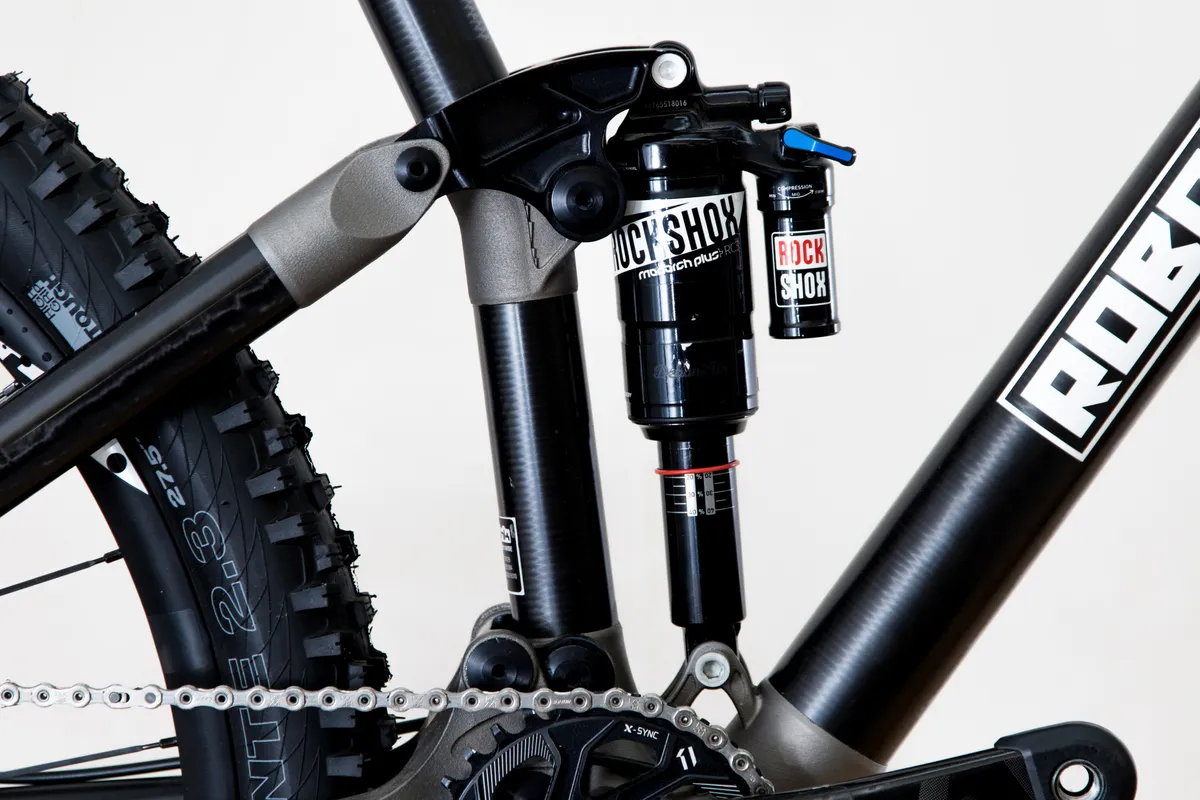
Apart from allowing you to alter geometry easily, what other benefits are there to your quite radical construction methods?
Andy: The great thing about the way we do things is that we don’t have to commit to tooling or moulds. We can change everything, even down to what size chainring the bike is designed to work with. With the design of our new 29er, we’ve been tweaking and finessing things, and it’s been really easy for us to incorporate that feedback into the 650b bike.
Ed: Jeff Steber at Intense mentioned to me once that he has to go with a design for almost three years to make it pay. If you’re in the position of having to make new moulds to update a bike and a new standard comes out, then you can’t react. It’s the reason why, when 650b wheels came out, a lot of manufacturers didn’t have carbon bikes for a while. We’re not constrained by that, so it gives us loads of flexibility. People say, “Oh, a full-carbon bike is way more structurally sound”, but they forget that all the aluminium inserts for pivot points are still bonded in. A lot of bearing failures in multi-pivot bikes are because of sideloading, due to alignment issues. Because we use additive manufacturing for the titanium pieces, we can ensure amazing levels of accuracy (we’re talking 0.05mm here). The way we bond the carbon tubes in is super-strong as well. Unlike a conventional bonded frame joint, where a lot of the adhesive is pushed out, we use a double-lap joint that we literally fill to the brim with adhesive. When you push the tube in, the adhesive splurges out (that’s the technical term!) and you know that everything is covered in it.
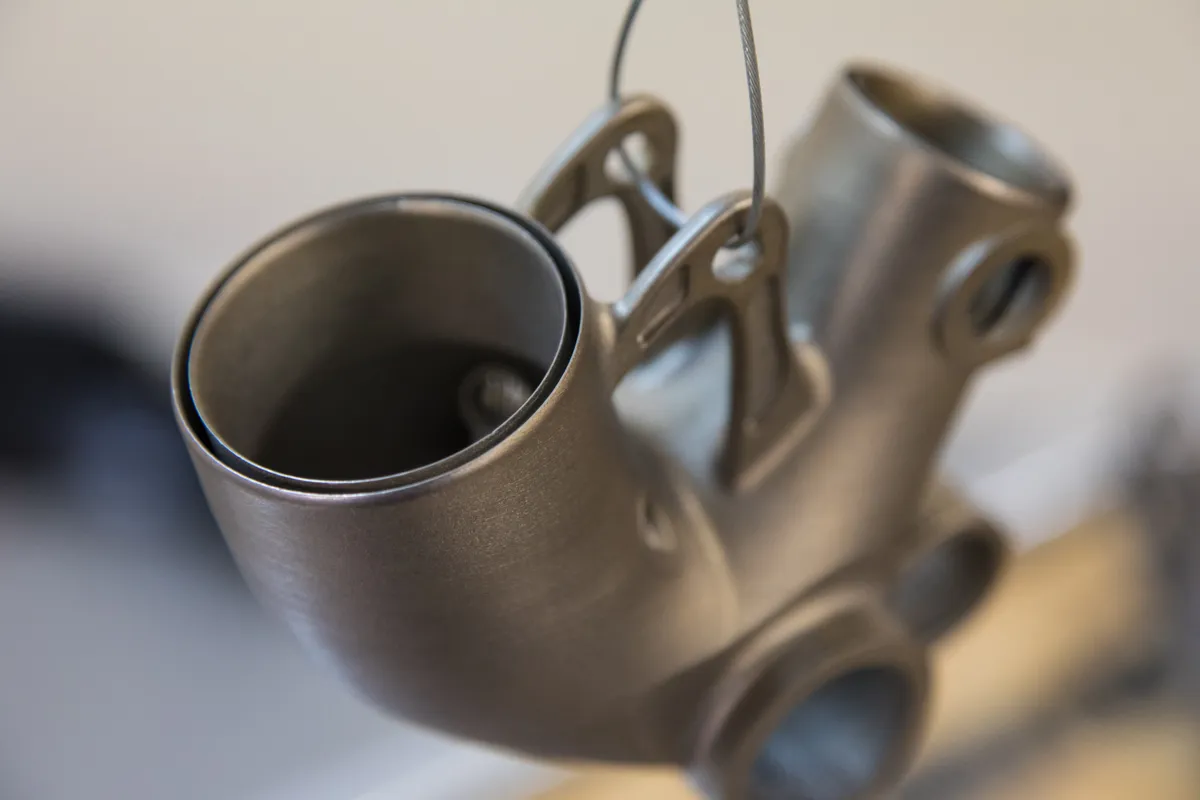
So, the frames are pretty strong then?
Ed: Our bikes are designed around downhill load casings – even our 130mm 29er. There was a turning point a while ago when people realised how capable a shorter-travel bike can be. The problem was that, at the time, the bikes weren't designed to take the abuse and they were falling apart. Our aim has been to build bikes that are designed to be ridden aggressively. Our frames can take 12 Gs of force – I think a fighter pilot blacks out at nine Gs, so they should withstand everything. Even Nathan Rennie hucking off a cliff!
What’s the most ‘out there’ bike you’ve made?
Ed: The biggest frame we’ve done has a reach of 510mm, but our jig goes up to 530mm and we get our carbon tubing in 3m lengths, so a 3m down tube is our limit!
Andy: That’s one of the big benefits of the way we make things. Even custom hardtail makers are limited by size, because they struggle to get long enough butted down tubes. The largest Nicolai GeoMetron is only that big because longer tubes aren’t available.
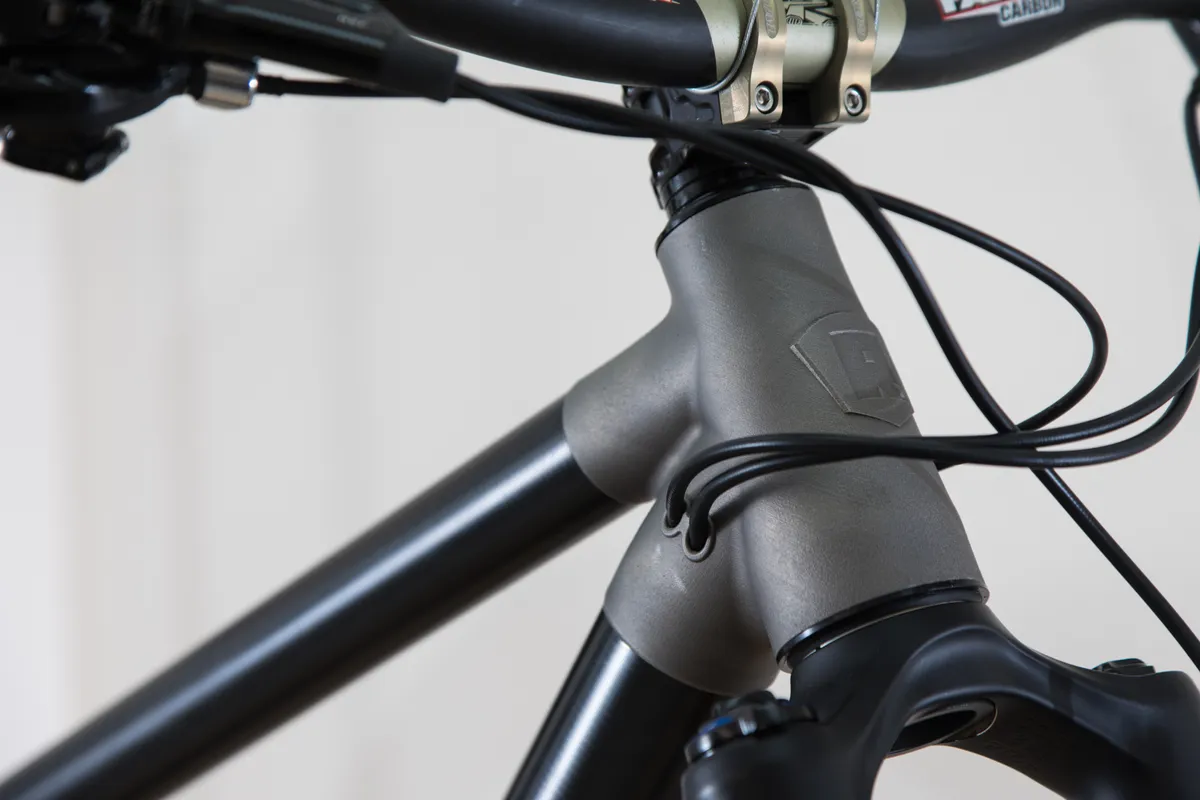
How much construction do you do on-site?
Ed: Renishaw in Gloucestershire make the titanium parts for us, but we assemble and finish the frames here in Monmouth. The only thing that gets made overseas is the carbon tubing, which comes from New Zealand. It’s custom-made for us, to our lay-up specifications, though. When it comes to prototyping, we’re really lucky to have Brit Matrix Engineering as our neighbours. The owner is a mad-keen mountain biker and he’s got a full machine shop making F1 parts and all sorts. We can just pop next door if we need something made and they can usually knock it out the same day. They’ve helped us out with a few problems at the 11th hour!
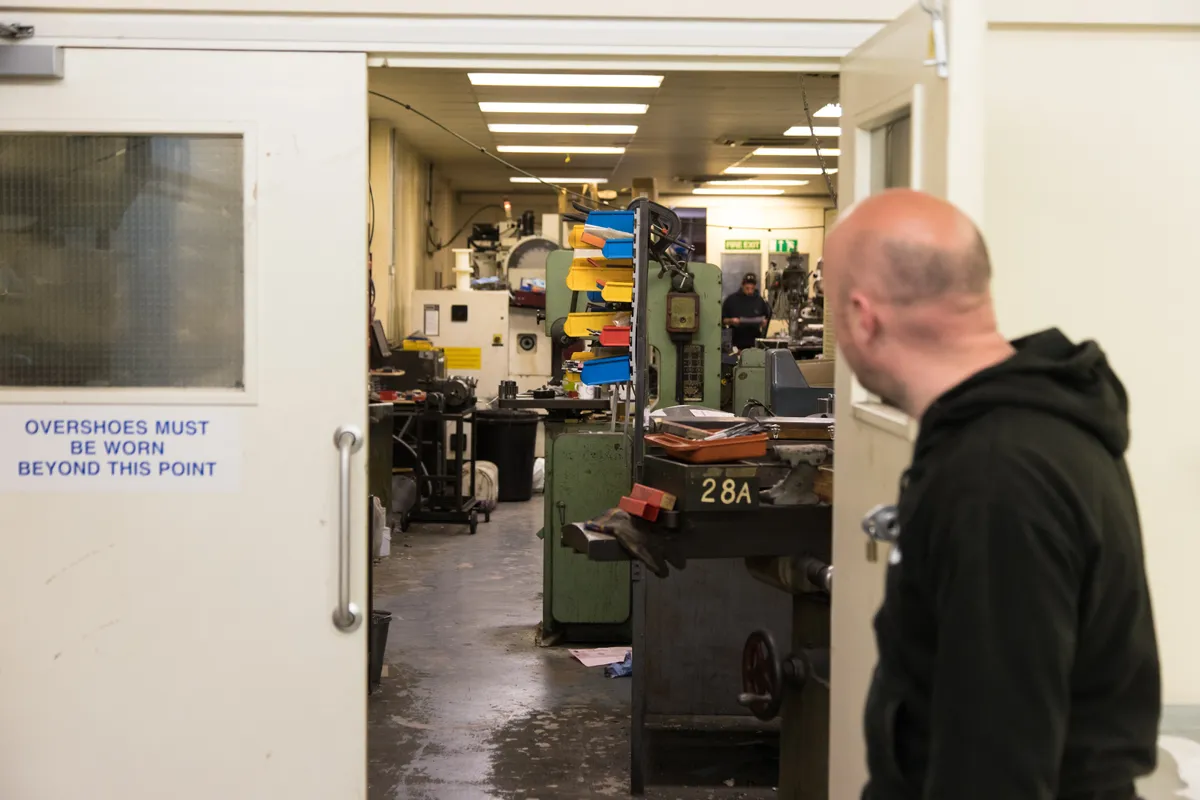
Is it an advantage being based here when it comes to testing too?
Ed: It’s great – you can literally ride out of the door. A large majority of our testing has been done in the Wye Valley, but we’ve taken the bikes to Scotland, the Alps, Malaga… all over, really. We even went to the Lake District and deliberately rode sharp slate trails all day to see how much we could get to smash into the down tube!
Andy: Our HQ is a bit of a work in progress at the minute, but we’ve got plans to expand, with a vision that customers can come here, get fitted up, test the bikes out on the local trails and feel part of the whole experience, that they’re buying something made to measure.
What is the process if someone wants to buy a bike?
Ed: There are two options. If you go on the website, you can put in your details and it’ll generate a bike with custom geometry. You can buy it there and then, or you can call us up and discuss any changes. The other option is to come here in person and get measured up.
Andy: We’ve had both extremes. Derek, an Irish customer, called Ed nearly every day while his bike was being made. Then we had a German guy who did the whole thing online and we didn’t interact with him until the money was in the bank. For the business to be scalable and to grow we need both, especially for the brand to grow overseas. For every customer, we send photos of their bike throughout the build process, so they can see their frame being created and feel involved in the whole thing.
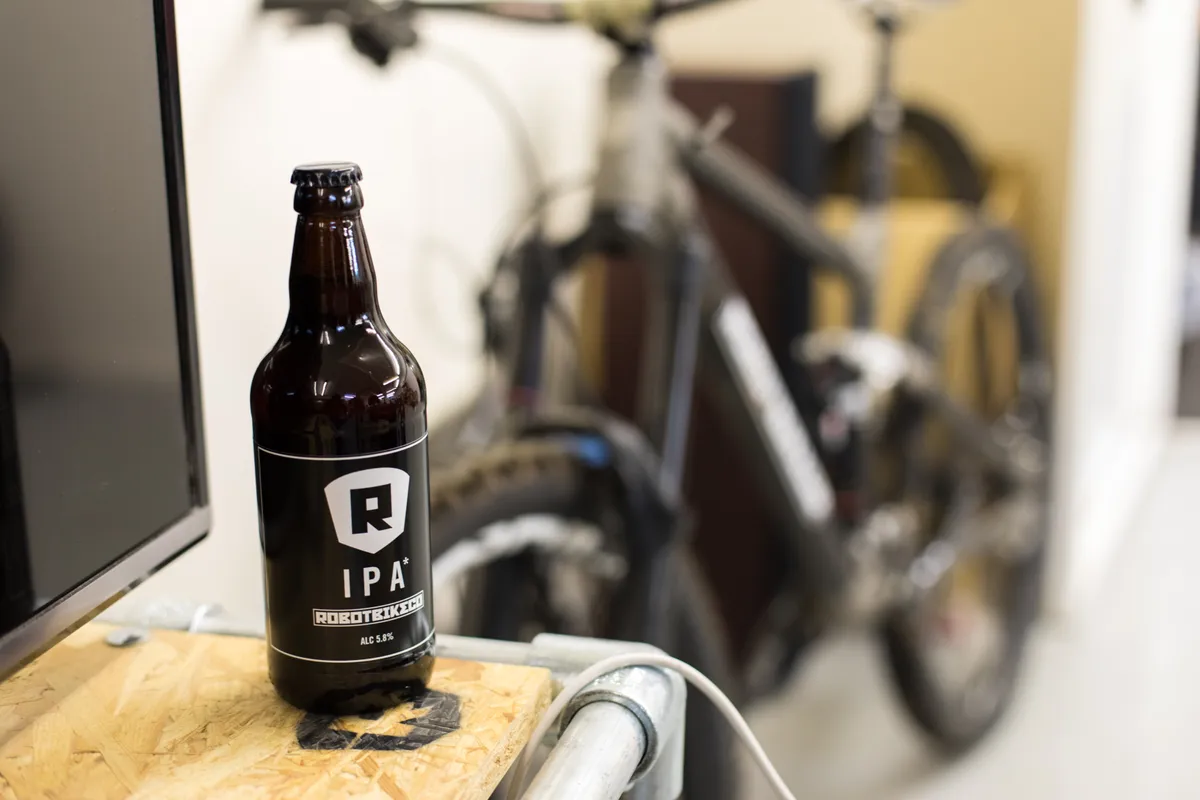
Have the general public been receptive to what you guys are doing?
Ed: I’ve been pleasantly surprised. It was certainly a worry of mine, having seen the comments on a certain bike website about the Arbr bike. They were brutal! People absolutely slated the bike. Knowing how much time and effort had gone into it, I think I’d have cried, if it were me. We actually did a full analysis of all the comments about our bike, with graphs and everything. On the whole, the feedback was amazingly positive. I was worried about the aesthetic at first. When you look at Dave Weagle’s other bikes, like the latest models from Evil, they’re mega-swoopy. His concern was that our bikes were so straight and people might not be open to that. We’ve maintained that classic bike frame look, but it can be a Marmite thing. I remember one guy at the Fort Bill World Cup said to me, “I don’t care about the technology, it just looks cool as f**k!” and that reassured me! It’s funny though, you get so wrapped up in a project that you need a really good mate to tell you honestly whether it looks like a piece of shit or not!
Andy: My mates had mixed feelings when I showed them the CAD drawings, but once they saw it in the flesh everyone was positive. I don’t think photos always convey stuff properly.
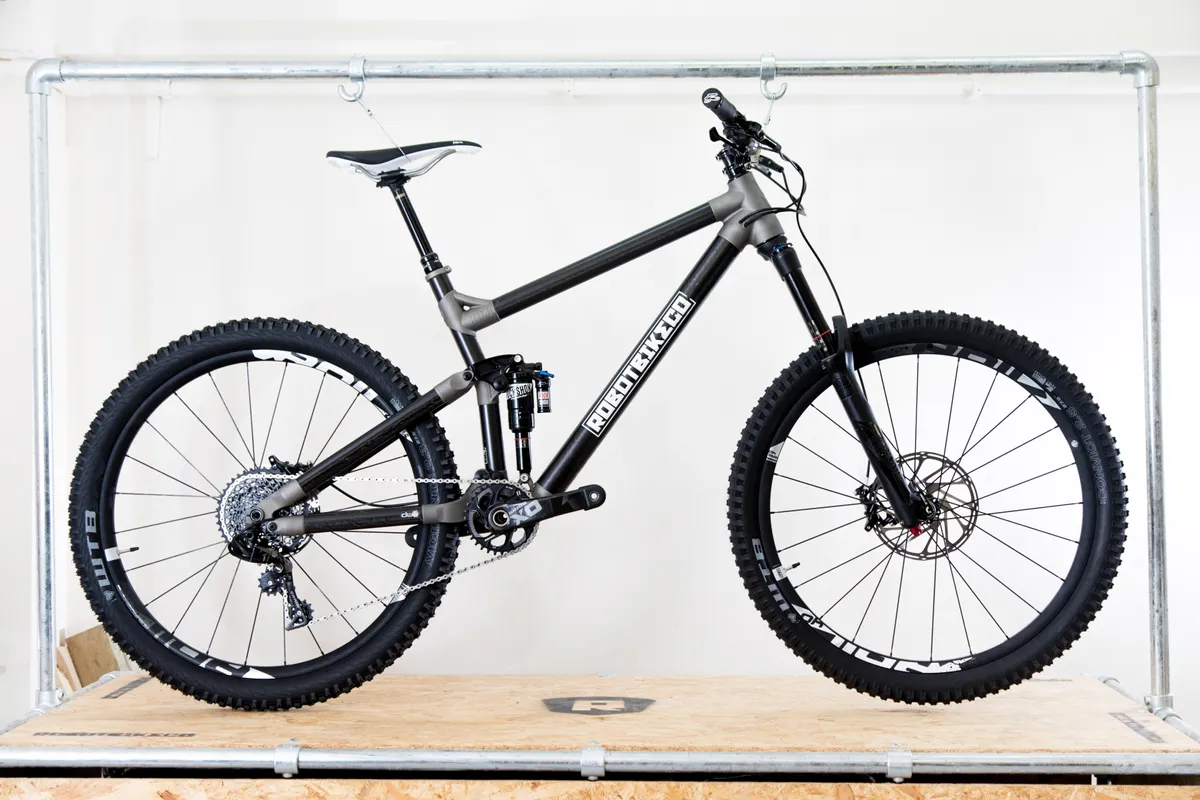
You guys have got the R160 650b bike and now the R130 29er. Have you got anything else planned?
Ed: Yeah, there’s loads of bikes we’d like to make, all sorts. We’re working on a hardtail and a DH bike is planned for some point in the future. I’d love to start a race team too. I’m 99 per cent sure it would be a downhill team if we did it – that’s where my heart lies. Although enduro is the big boom at the moment, I still think DH is the F1 of the sport. If you can make a full-sus bike that wins a World Cup downhill race, it’s a big statement that you can make a great bike. I also think enduro is a bit of a gamble from a sponsor's point of view, because there are so many variables. You’ve effectively got six stages where you can get a mechanical and it's game over. If we’re going to risk that sort of money, then it’s a bit more guaranteed in DH. I’d love to have a rider on our bikes in the World Cup top 10 – that’s the dream!
For more info on Robot’s bikes, click here.
You can subscribe to MBUK here and check out our Facebook, Instagram and Twitter accounts for all of the latest mountain bike action.
And don't forget to sign up to our newsletter!
